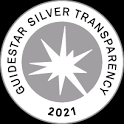By Jose German
In my years as a gardener, I have learned the importance of the seasonal gardening cycle. Early on I adopted the approach of working with rather than against nature. Don’t waste time and resources with plants that are not appropriate for your location. Plants, like humans, have differing needs, and requirements for soil nutrients, water, and sunlight vary.
Learn about the particular environment or environments in your yard. Take into consideration sun exposure, topography, and soil moisture. Choose plants according to the microclimates of your yard and plant them abundantly to make a statement every season. When planning your garden, consider plant size, color, texture, and bloom time. The goal is to create sequence that keeps your garden appealing from early spring to late fall.
If I had to choose a few favorite spring flowers, I would include the following:
- Phlox stolonifera, or creeping phlox, is a Northeastern native. Its beautiful, delicately fragrant flowers bloom from April into May, and the foliage spreads to form an attractive low groundcover lasting through the fall. It grows well in shady to partially sunny areas. Creeping phlox comes in various colors but most commonly is blue.
- Virginia bluebells are spring ephemerals, blooming mid-spring and going dormant by early summer. The flowers are a gorgeous delicate blue and support early pollinators such as bumblebees. The bluebells’ natural habit is deciduous woodland, so they work well in shady spots. This beautiful plant is considered endangered due to habitat loss. Don’t be afraid to plant a lot since they will disappear after blooming, allowing later bloomers to take their place until they reappear next spring.
- Aquilegia Canadensis, or eastern red columbine, is a May-blooming native found naturally in woodlands and on rocky slopes. It is a hummingbird favorite, and hummingbirds are important pollinators for the plant. A short-lived perennial, it self-sows its abundant seeds and may pop up in patches of bare soil or rocky areas.
- Tiarella cordifolia, or white foamflower, is a great groundcover with beautiful creamy white spikes and light green foliage that remains beautiful after blooming is over. Foamflower blooms around the same time as bluebells and creeping phlox, creating a nice spring mix of colors, shapes, and textures.
My summer selections:
- Echinacea purpurea, or purple coneflower, is colorful and easy to grow. Native to moist prairies, meadows, and open woods of the central to southeastern and eastern United States, it typically grows to 2-4′ tall. Its showy daisy-like flowers bloom through the summer. The dry seed heads are an important food source for baby goldfinches in late August and September, and a planting of echinacea will attract flocks of goldfinches at that time of year. The seed heads can be left up into the winter to continue attracting goldfinches and other birds.
- Anise hyssop. The scientific name of this valuable plant for pollinators is Agastache foeniculum, but who could pronounce that? It is native to the Midwest and Northeast. Hyssop is an aromatic perennial in the mint family, growing from 3’-6’ tall and blooming from late June to September. It likes dry, open, and semi-shady areas but is very adaptable. It will self-seed and spread rapidly, but it’s easy to pull up if necessary. Hyssop is very attractive to bees and butterflies, and its seeds are another goldfinch favorite.
- Liatris spicata, also known as gay feather or blazing star, forms an elegant purple spike that will catch the attention of both human and pollinating garden visitors. It mixes well with echinacea and blackeye Susan. Liatris is native to the eastern United States and is most often found in meadows. Its showy two-to-four-foot-tall spikes of flowers bloom from the top down. The foliage is grass-like and grows in clumps.
- Asclepius tuberosa, commonly known as butterfly weed, butterfly flower, or orange milkweed, is, like other milkweed varieties, a host plant for the Monarch butterfly. Its distinctive orange flowers start blooming in June and continue until late summer. The plant is happy anywhere with sun to part sun as long as the soil isn’t wet. It grows from one to two feet tall with clusters of nectar- and pollen-bearing blooms that attract butterflies, bees, and hummingbirds all summer long.
My fall selections:
- Symphyotrichum novae-angliae, which, thank God, we can call simply New England aster, is a local native that blooms from late August through September. It grows 3-6’ tall but usually stays on the shorter end of that spectrum. Pollinators and people love its late season purple flowers with their yellow-orange centers. It is happy in full to partial sun and medium to moist soil.
- Symphyotrichum novi-belgii, or New York Aster, has much in common with New England aster but is shorter in stature and blooms later in the season, often lasting until frost. This makes it an excellent nectar and pollen source for migrating Monarchs and late pollinators.
- Solidago caesia, or blue-stemmed goldenrod, is another late season favorite of mine. Goldenrods in general are exceptional plants in terms of their beautiful yellow blossoms and wildlife value (they support over 100 species of moths and butterflies), but not all of the over 20 goldenrod species behave well in small gardens. Caesia is an exception. Two to three feet tall, it is slow to spread and happy in full to partial shade. Its September through October bloom time makes it a food source for hungry fall pollinators. The yellow goldenrod flowers also combine well with the blue or purple fall-blooming asters. Goldenrod unfortunately has gotten a bad rap, being falsely accused of causing hay fever – the actual culprit is ragweed.
Entomologist and bestselling author Doug Tallamy writes, “In the past, we have asked one thing of our gardens: that they be pretty. Now they have to support life, sequester carbon, feed pollinators and manage water.” Starting with these and other native plants, your garden can do all of these things – and still be pretty.
The Northeast Earth Coalition has been awarded the Guidestar Silver Transparency Seal 2021.


